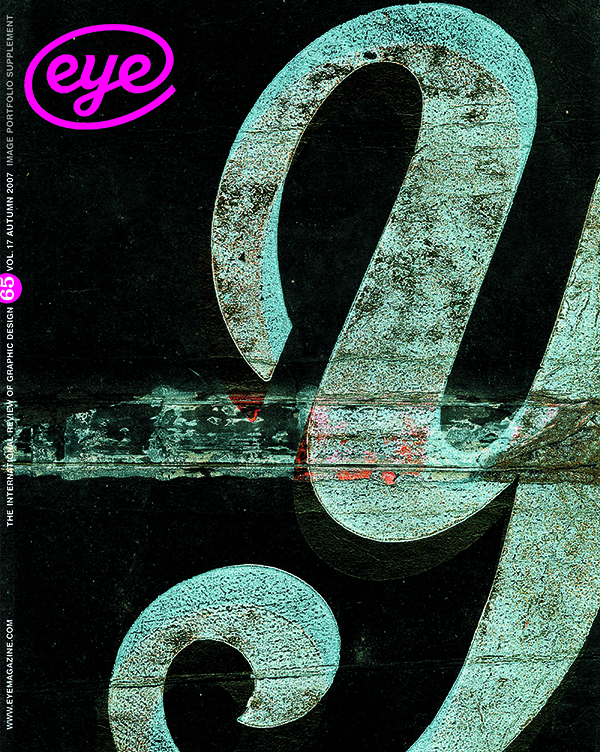Autumn 2007
You can’t bomb a virus
Barnbrook Bible
Booth-Clibborn Editions, £35, €59.95 Reviewed by Monika Parrinder and Colin DaviesIn the early 1990s at the Design Museum café, mentally flitting from the coffee-machine’s slick Gaggia logo to that sensibly skirted icon for the women’s toilet, one’s attention was snatched by a series of mini visual explosions: imagery bursting from a sequence of posters which, with typography like contorted shards, mocked the usual Modernist layout. These experiments in graphic deconstruction came from the Cranbrook Academy of Art, a US invasion, starting in the 1980s, that blew apart a graphic world largely oscillating between traditional info-design and providing the camouflage for consumer culture. This was an early influence on Jonathan Barnbrook, who found a politically engaged use for the deconstructive graphic trope, creating, for example, the typeface Exocet (1991) as a response to missiles of the first Gulf War.
‘Friendly Fire’, the Design Museum’s retrospective of Barnbrook’s work, both celebrates and criticises the role of graphic design in the matrix of culture. For a typo / graphic designer to advance to a major gallery space is still rare and lays testimony to the consistency and enduring relevance of Barnbrook’s work and his virusfonts.com website – as does the fact that an ‘unheard of’ 500 copies of his Barnbrook Bible were sold in the opening weeks. With decoration resurfacing in contemporary design, his time has come again; as bombs drop on Iraq once more, his visual rhetoric reflects the cyclical nature of violence.
All too aware that the potency of design can be neutralised in the gallery, the Barnbrook exhibition assaults the eye the minute you enter. Capturing the thrall of the city, every wall is fly-posted from ceiling to floor, punctuated with provocations both verbal – ‘You can’t bomb an idea’ – and visual – wallpaper with its flowers made from intricately latticed logos.
Adbusters relaxes behind glass. Two issues art-directed by Barnbrook – ‘Design Anarchy’ (2001), which re-launched the First Things First manifesto and ‘Apocalypse Soon’ (1996), completed during the Israel / Lebanese war – provide a curatorial framework for his ideas and a controversial mediation on the role of the designer-author as opposed to designer as transcriber-of-ideas or corporate agent. His client work is seen, by some, to contradict this stance. This is perhaps resolved if one considers Barnbrook’s fidelity to the context of design and its craft. He is a master of visual language, be it political rhetoric, pharmaceutical package design (for Damien Hirst) or corporate identity (for Beams clothing in Japan).
Barnbrook’s legacy isn’t politics, but its re-presentation: ‘Fonts define the tone of voice for every age.’ Language, the first technology of representation, is double-coded as both target and weapon. Typography is its subtext.
The two versions of his typeface Shock & Awe (2004) show this concept well: one expands the Tomahawk missile’s ‘brand identity’ into an alphabet; the other, Enola Gay, uses the anonymous lettering on the side of the plane that dropped the H-bomb. For Jonathan Barnbrook, this ‘raises awareness of the invisible role of typography in every aspect of our lives’. This is the virus.
Monika Parrinder, lecturer, writer, Limited Language, London
Colin Davies, lecturer, writer, Limited Language, London
First published in Eye no. 65 vol. 17 2007
Eye is the world’s most beautiful and collectable graphic design journal, published for professional designers, students and anyone interested in critical, informed writing about graphic design and visual culture. It is available from all good design bookshops and online at the Eye shop, where you can buy subscriptions and single issues.

